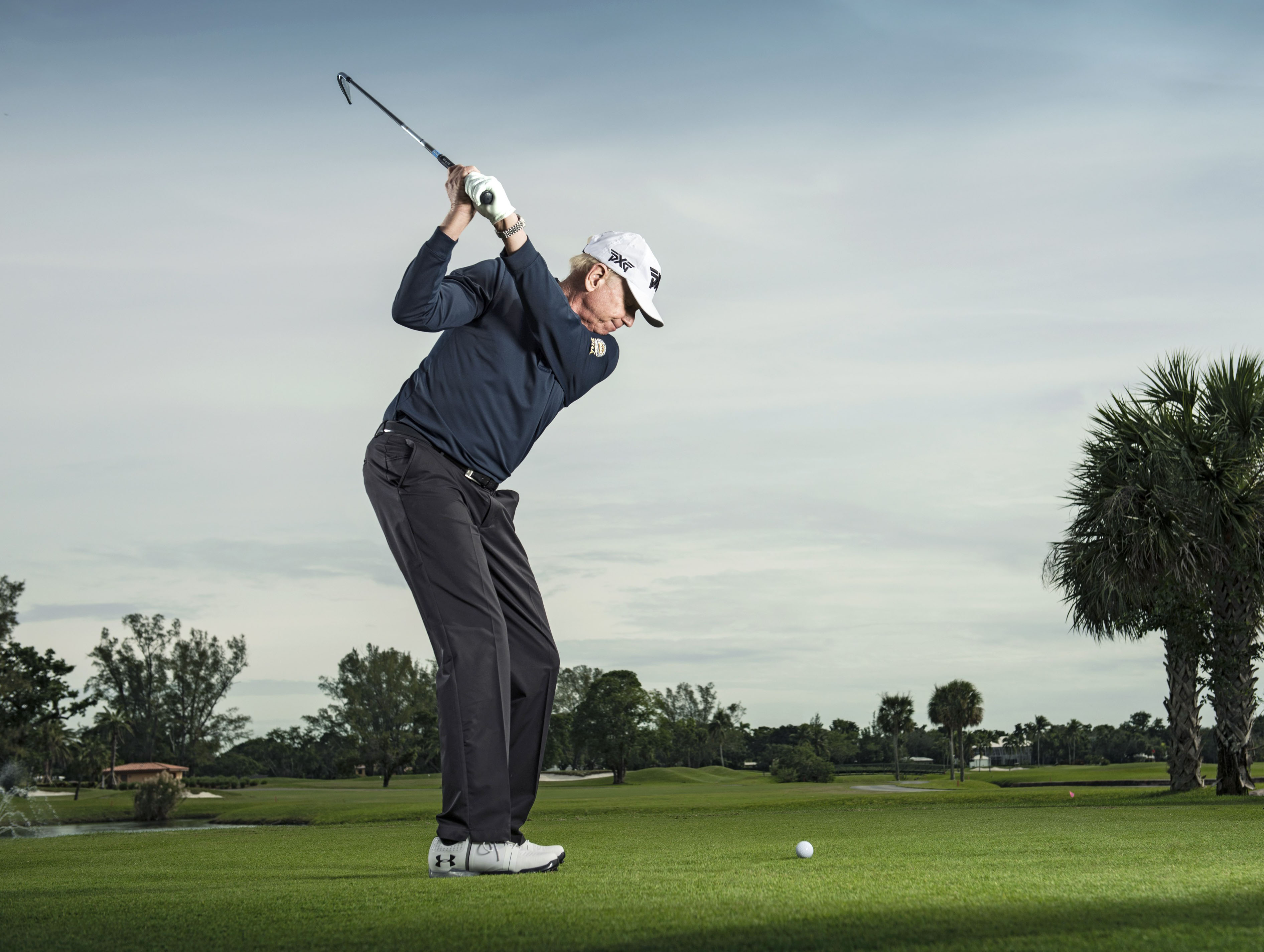
Wind can make playing golf difficult. It requires patience and control. A bad shot will cause trouble, so it's critical to strike the ball properly to minimize the risk. It is important to take advantage of the wind's opportunities. A strong tailwind can help you make the most of your backswing.
Keep your swing consistent
When playing in strong winds, it is important to maintain a consistent swing. The wind can help you carry the ball farther, but you shouldn't push the ball too much. You'll notice a drop in your ball trajectory and will need to adjust your body to compensate.
You should adjust your stance regardless of whether the wind blows from the left or right. You should adjust your stance to be wider than usual. The prevailing wind direction should be your goal. It will help your shot roll out less and make the job easier when you place it.

Maximizing the benefits of a tailwind
A tailwind is a powerful tool for playing golf. This will increase the distance of your shots, but you need to know how to make the most of it. Make sure that you are using the correct club for the wind. If you have a headwind, you should use a higher-lofted club. This will increase your ball’s launch angle to help you hit the ball higher.
Headwinds will cause your golf ball to suffer twice as much damage as tailwinds, but this only applies to higher wind speeds. For example, a headwind at 10 mph will decrease your carry distance by 19.2 yard. In contrast, a 10-mph tailwind will increase your carry distance by 14.6 yards. Remember that wind strength can be very variable from one moment.
Laying up to avoid a hazard
In golf, laying up is an appropriate option to avoid hitting the ball into a hazard or to position it better for the next shot. Laying up can be a good option for short par 4 holes where wind can cause the ball to move slightly, and you may miss the pin. Laying up also allows you to save two to three strokes by allowing the ball to land in a safer location.
Laying up can be a great option on par five holes as you have more chance of getting onto the green with a punch shot. Playing in the wind can make it difficult to avoid hitting the ball too much. Although it might seem bad, the lowered trajectory can help with your shot.

Reorient your focus to avoid fighting cross winds
Crosswinds can cause frustration during a round of golf. The wind can alter your golf swing and cause it not to follow the line. Adjusting your aim is the best way to avoid this. To avoid fighting a crosswind, aim to either the left or the right of the wind's path. This will help you hit straighter shots and reduce backspin.
You must consider the impact of wind on golf. It can be difficult to determine the distance between hazards, your ball and hazards when you're new to the game. Another reason to shift your aim is not to hit a hazardous area. If you are aiming several yards from a danger zone, it will be easier to swing safely and avoid a costly penalty stroke.
FAQ
What is the best thing to bring on a vacation to the fairway?
You should bring snacks and beverages. Make sure to bring snacks and drinks.
How often should I go to the golf course?
It depends on how many hours you have. Most people recommend at least two sessions per week.
If you're serious about improving your game, you should aim for four rounds per week.
What kind of clubs should I use?
There are many types of clubs. Most players start with a driver, a heavy weight club that allows them hit the ball further. Woods, wedges and wedges are all options.
Woods are clubs that are longer and more flexible. They allow players to be closer to the pin, but still have the ability to reach the green. These clubs are used for long drives or approaches.
Irons are shorter clubs which help players hit the ball close to the pin. These clubs are used often for chipping and putting, as well as short-distance shots.
Specialized clubs are used to control and direct the ball's flight path. These are used to direct shots that require precise direction.
Putters are small clubs used to move the ball towards the cup. These are short putts that players use to play.
The type and type of shot you wish to make will dictate the club you use. Different clubs suit different types of shots better.
Drivers can help you hit the ball further than expected. Wooden are great for driving the ball over long distances. Irons are great for making short shots. The ability to control the ball's flight is a great advantage of wedges. The perfect tool for rolling the ball in the hole is the putter.
What are the different types of golf courses?
There are many options for golf courses. Some courses are made for beginners, others for more experienced players.
Some golf courses are close to lakes, rivers, mountains and forests. Others are in urban areas. There are many golf courses, from public parks to private estates.
How much does a round cost for golf?
Expect to pay $15-$30 per head This amount includes greens fees, cart rental, and refreshments.
How do I practice my golf swing?
Practice makes perfect! Practice is essential for any sport. Practice is essential if you are to improve your golf game. Practice until you are comfortable with the basics.
Both hands should be used. Start with short shots. Then, work on longer drives. Finally, practice chipping/putting.
Statistics
- Buying a set of Titleist or Taylor-Made irons for nearly $1,000 is simply not necessary and likely a waste of money. (golficity.com)
- In the United States, the number of people who play golf twenty-five times or more per year decreased from 6.9 million in 2000 to 4.6 million in 2005, according to the [51] (en.wikipedia.org)
- They do this by means of assessing and rating courses according to the average good score of a "bogey golfer," a player with a handicap of around 20. (en.wikipedia.org)
- Professional golfers typically make between 60% and 70% of greens in regulation. (en.wikipedia.org)
External Links
How To
How To Hit A Perfect Bunker Shot
A bunker shot is a type golf shot that you aim at a certain spot on the hole (the green) to ensure your ball does not bounce off the surface. This is done by taking advantage if the green slopes. The goal is to direct the ball as far as possible towards hole.
The best way to reach your target point when playing golf is to find the best line. You need to take into account many factors, including how far away you are from the target and what terrain you are hitting through. Also, weather conditions, bounce requirements, and whether the ball needs bouncing off the ground.
It is important to understand the fundamentals of bunker shooting in order for you to achieve perfect results. You must first determine whether you are facing uphill or downward. A drawing club is required if you are facing uphill. You should swing with a fade when you're looking downhill. Next, determine how fast your body needs to move to stop the ball bouncing off of the green. Measure the angle between the ball's head and the direction it is traveling. Next, determine the dimensions of the bunker you want to aim at.
Once you've figured these things out, you can start swinging. Swing hard enough to let the ball go past the face of the club head but slow enough to keep it from bouncing off the green, just like you would when making any other shot. You can start your approach once you have found the right speed, trajectory and direction. Slowly approach your ball until you're close enough to the landing area. After you have taken one last look at your ball, release it. If everything goes according to plan, you should be able to hit a perfect bunker shot.